When it’s time to help their communities, MSU Bears step up.
Here are a few stories of alumni who changed what they were doing to respond to this emergency.
Physician treating patients in COVID clinics
The world cannot vacation from an unexpected virus outbreak. Missouri State alumna Dr. Susan Easley decided neither should she.
Easley is a family physician at the outpatient clinic of the University of Texas Medical Branch, or UTMB, in Galveston, Texas.
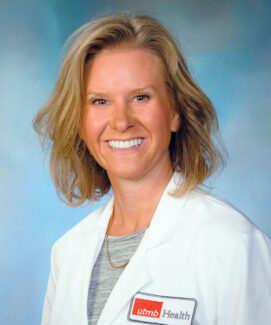
The pandemic became a serious concern there the second week of March. The same week, she had scheduled vacation time.
“UTMB opened several COVID clinics that week and needed volunteers to staff them,” Easley said. “My schedule was free from patients since it was my vacation time, so it only made sense for me to volunteer.”
Easley has been working with patients of all ages in COVID clinics.
She’s adjusted her duties to better serve the needs of the community. Many other doctors at her outpatient clinic have also shifted to help as they can.
This includes treating patients with non-COVID issues by phone or video call.
“No one has been doing what they originally signed up to do, but no one is complaining. It’s human nature to want to help your fellow man. I see evidence of this every day,” she said.
Managing the virus has created a need for social distancing. But stopping the spread is a battle that has united all in Easley’s community.
“Doctors and nurses work long hours with sore and peeling faces from their protective equipment, still smiling, while people with 3D printers or sewing skills step up to make face shields and masks,” Easley said.
“All have found creative ways to contribute, which is incredible to see.”
Easley has an important piece of advice to offer fellow Missouri State alumni in this time of crisis: Remember the pandemic is not over.
“I’d encourage everyone to wear a face mask in public, as it is not just to protect yourself, but also to protect your neighbor,” Easley said. “It only works to help reduce the spread if we all do it.”
Immunology expert working on test for rapid diagnosis
Dr. John Cambier wears multiple hats.
Aside from being a distinguished professor, he is director of the University of Colorado School of Medicine Human Immunology and Immunotherapy Initiative.
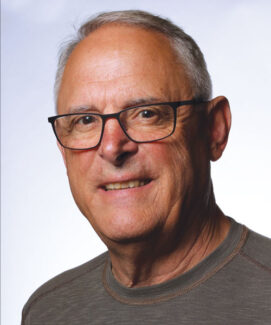
He conducts research, oversees a laboratory at the university funded by the National Institutes of Health, and is editor-in-chief of a major immunology journal.
Early during the pandemic, he was approached by Quidel Corporation, a San Diego diagnostics company, to help them produce a rapid test for CoV-2 in patients’ samples.
Here’s how it works: Among the many cells in the immune system are B lymphocytes. About one in a million of these B cells reacts to a given foreign protein (an antigen) produced by a pathogen such as CoV-2.
After these cells recognize their specific antigen during infection, they produce antibodies that bind the antigen.
“In addition to protecting us, anti-pathogen antibodies can be deployed as powerful tools in clinical tests to decipher if someone is actively infected,” Cambier said. “Quidel hopes to use anti-CoV-2 antibodies to make diagnostic tests for CoV-2 infection.”
Cambier’s lab has developed unique technology to isolate rare antigen-specific B cells.
Quidel sent Cambier peripheral blood cells from convalescent COVID-19 patients. Those are people who are making antibodies against CoV-2, but are virus-negative.
“We will use viral proteins we are producing in the lab to identify and isolate the cells of interest,” he said. “From those cells, we will clone the genes that encode their antibody to CoV-2. Quidel will use this genetic information to make the antibodies they will use in the test.”
It will take Cambier two to four months to produce the CoV-2 antigens, isolate the rare B cells of interest and clone their antibodies. Then Quidel will develop the test.
He did not know if the test will be available at pharmacies or for medical professionals, but it will be invaluable in speeding up diagnosis and diagnosing many more people.
“Like dip-stick pregnancy tests, this will be a rapid point-of-service test for active virus infection,” Cambier said. “The advantage of the test is results can be read in minutes rather than hours or days required for the genetic tests for active CoV-2 infection.”
Health director strives to protect the Springfield community
Clay Goddard wants you to have hope that we’ll have a “normal life” again.
“You have to. If you don’t have hope, what do you have?”
Clay Goddard has the huge task of trying to keep COVID-19 at bay in Springfield and Greene County.
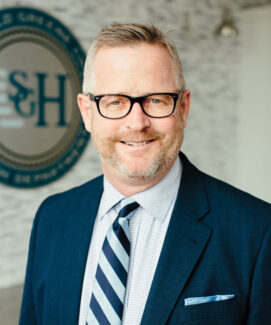
He sets or recommends policies to prevent new cases and directs his team as they trace cases back to their sources. He is an ambassador for public health, speaking at local news briefings and to national media.
If he can have optimism, that should inspire some confidence in the rest of us.
That’s not to say he doesn’t see the virus as one of the most serious risks to ever arise in his job.
“I have been trained to not be afraid of many things in the communicable disease sphere — anthrax, H1N1, Ebola, hepatitis and HIV, for example. But a novel respiratory disease or flu really frightens me. In January, I started to hear about this syndrome. We realized we needed to develop our own guidelines and processes for the county, or we will be in trouble.”
By late February, he and his team were working long hours, seven days a week. It didn’t get better.
“When the first case showed up in March, it was just nuts. March and April were a blur, but felt like an eternity at the same time. I had a lot of sleepless nights, not only because of so much work to be done, but because of anxiety. The community needed answers, and they needed to come from our entity.”
Unfortunately, announcing cases is more routine now. We have to accept the virus will be with us for a while, he said.
“People are going through the stages of grief repeatedly. I have experienced them all, and have had them aimed at me. People are frustrated, angry and impatient. But we have to find a way to have the fortitude to get life back to normal.”
He said it’s clear masking and social distancing help stop the spread.
“I think we are on the right path. But we can’t rush.”
He’s been impressed with how sectors of Springfield have come together, including businesses, government, education and health care.
“Working through something as complex as this situation, you will run into conflicts. We have negotiated well so far.”
Missouri State has been in these discussions, and university alumni are often community stakeholders.
“I keep thinking how proud I am to be a Bear. I keep meeting people who went to Missouri State who are incredible leaders and examples. We are making a difference in this world.”
Alumna liaises between hospital association, U.S. government
Before most of us were paying attention to COVID-19, Kristina Weger was on alert.
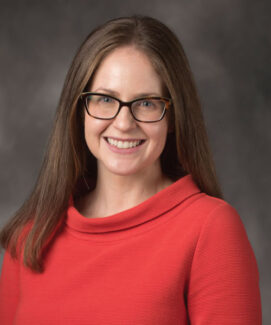
She coordinates the American Hospital Association’s outreach on strategic priorities to the federal government, including the White House. She serves as a liaison for AHA to members of Congress and their staff.
“It’s my job to provide information as they are making decisions and enacting policies that could affect hospitals and health systems,” Weger said.
Weger said COVID-19 brought unique challenges to hospitals and health systems, including the need to:
- Rapidly increase bed capacity in some cases.
- Expand the ability to reach patients through telehealth.
- Acquire personal protective equipment, or PPE.
- Offset revenue losses from preparing for COVID patients (many hospitals had to cancel or postpone non-COVID treatments and procedures, causing a huge loss of revenue.)
An AHA report estimates a $202.6 billion loss due to COVID-19 expenses and lost revenue for hospitals and health systems from March to June.
In response to the coronavirus, AHA has advocated for regulatory relief from the federal administration.
It has also asked for flexibility and resources to ensure hospitals have the tools necessary to combat the pandemic. These include setting up field hospitals or providing care in nontraditional settings.
“We also urged the federal government to provide much-needed funding to hospitals and health systems due to both the higher costs of treating patients with COVID-19 and the cancellation of elective procedures,” Weger said. “In March alone, Congress passed three relief packages. AHA has worked daily to make sure funding included in those packages is distributed as quickly and efficiently as possible.”
AHA works to understand hospital needs for PPE and testing supplies. Then, AHA works with distributors to confirm equipment and supplies are going where they are most needed.
In early April, AHA and its partners launched the Protect the Heroes Campaign. This initiative allows the general public to make direct online donations to America’s hospital and health systems.
“It is a national initiative to raise much-needed funding for critical hospital resources, including hundreds of millions of masks and other important equipment and materials.”
Surgery resident has seen dark times, humanity
Caleb Birchler is no stranger to the surgery suite.
He works as a general surgey resident at Beaumont Health Systems in the Detroit area.
When COVID-19 hit Michigan, Birchler managed intensive care units.
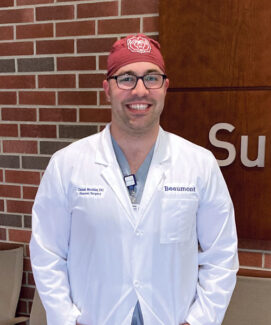
“Early on, the Detroit metro area had quite a bit of COVID. Our hospital system had around 80% of the cases in the state of Michigan,” Birchler said. “They needed people to come and help out. People who work in surgery are comfortable with treating really sick patients, including ventilator management.”
In medicine, Birchler said, you have a different view of death and critical care.
He knows all people will die — someday.
“The only things that we change are the circumstances and the timeframe,” he said.
But he faced some difficult situations in the COVID units.
The worst days were when he had to “terminally wean” patients, which means remove them from ventilators.
One patient, an elderly grandfather, declined quickly during his 12-hour stay in the ICU. He was terminally weaned over a video call with his daughter and grandson, who sang “You’ve Got a Friend in Me.” They also made sure grandpa knew he had another grandchild on the way.
“It was rough,” Birchler said. “But it speaks to the humanity of all of this.”
After witnessing firsthand what COVID can do to people, Birchler asks his fellow Bears to wash your hands, listen to health experts and be considerate of others.
“There are other people out there who may or may not be as healthy as you. They may or may not have the ability to respond to those viral loads. At the end of the day, it’s not about you.”
Business president establishes fund for food-service workers
Everyone was talking about COVID-19 in March. But when St. Patrick’s Day celebrations rolled around, Bernie Fechtel knew there was trouble.
Fechtel is president of Fechtel Beverage & Sales in Jefferson City, Missouri, and they sell beer.
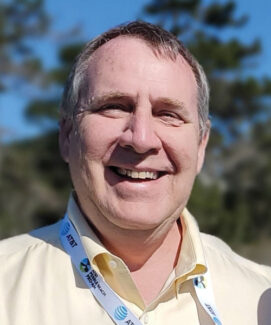
“Turnout was about 10% of what it would normally be. We felt this is really going to wreck the bar and restaurant business if this keeps up,” Fechtel said.
So Fechtel teamed up with the United Way of Central Missouri to establish a fund to help food-service workers.
He donated $20,000 to get started.
“We wanted to use an agency that had a good reputation, but also wanted to transfer the privacy to them. The folks that would apply for these grants would be our customers or folks we call on every day. We wanted that information to be totally private so we wouldn’t have any idea who was applying for the grants,” he said.
Anyone could contribute to the fund, and donations poured in.
To date, the fund has more than $60,000.
Most waitstaff earn less than minimum wage and rely on tips.
“If there is no business, there is no money. That particular industry got hit harder than others,” Fechtel said.
Food service employees in a nine-county area were able to apply for the assistance. Nearly 100 have, and $27,000+ has been paid out.
Rent assistance was the most common request, although some needed help with car loans.
Money was paid directly to creditors, not workers.
Workers can apply twice, so Fechtel expects more applications.
“We are preparing for another wave to come. As many generations as our family has been here, this community has been wonderful to us. We pride ourselves on being part of the fabric of this community and we wanted to give back. We felt blessed to be in a position to help.”
Scientist helps MSU geology students after travel restrictions
This spring, Missouri State geology students were caught between a rock and a hard place. Alumna Bobbilynne Koepke lent a helping hand.
Koepke has a master’s degree in environmental science from the University of New Orleans. She is a principal geologist with Environmental Works, Inc., in Springfield.
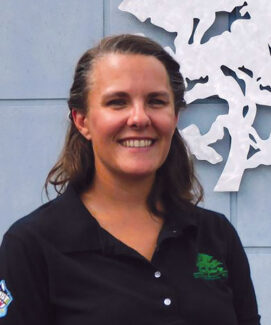
She recently came to the aid of geology assistant professor Dr. Matthew McKay.
One of his upcoming classes in field geology needed a total redesign due to travel restrictions.
The class normally vists New Mexico and Colorado for six weeks in the summers. But in 2020, the course would need to be conducted entirely in the Ozarks.
“A whole new set of exercises had to be prepared in a matter of months,” Koepke said. “Dr. McKay asked for help in that planning.”
Just one catch: “Many of the students had done most of their course work in the Ozarks, so we had to try to find ways to make ‘the same old rocks’ seem new and interesting,” Koepke said.
Koepke reached out to her local contacts, including Greene County geologist Matt Forir, another MSU graduate. As a student, Koepke had assisted Forir with research in southwest Springfield’s Riverbluff Cave.
“The cave was discovered accidentally in 2001, as the county extended a portion of road,” Koepke said. “It contains numerous animal fossils, tracks and remains that date back to at least 600,000 years ago.”
The cave’s research projects include paleontological excavation of fossils and water-quality sampling — a perfect spot for future geologists.
The students spent the first week of the class mapping the cave and taking environmental samples.
The next week, they mapped rock outcrops along a 60-mile stretch of the Current River while canoeing.
Koepke served as an adjunct instructor for portions of the class.
“My company was contracted by the university to bring one of our drill rigs out to a site, so I could teach them how to log soil and rock cores,” she said.
The students took several hiking trips, collecting data to create maps and profiles, and toured Springfield Underground.
They practiced social distancing and wore masks when needed.
“My heart really went out to these students. Many are seniors and this is a required course. If this class didn’t happen, they might not have been able to graduate on time.”
It was a challenge to help pull it all together, Koepke said, but one she enjoyed.
“Dr. McKay deserves serious props. His dedication in making sure students are prepared to enter the workforce is admirable,” Koepke said.
“I’ve said I would like to earn my PhD or become an instructor later on in my career. I think helping with this course reinforced that.”
Inventor manufacturing protective shields for businesses
From his neraly 10,000-square-foot factory in Louisburg, Kansas, Kevin Stoops is staying busy.
Kevin Stoops owns KRS Corporation, which usually manufactures products for the restaurant and theater industries. But ever since COVID hit, he’s also been making polycarbonate desktop shields for businesses.
His first shield was crafted for the local library.
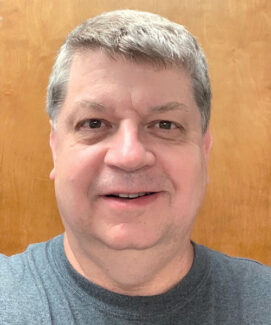
“It was 3 feet tall and 17 feet long, and made for the library to deal with people checking books in and out. It’s to protect both the workers and the patrons,” he said.
Stoops is an inventor with 24 patents. His products are used around the world.
When the pandemic hit, he saw a need for shields.
The products are used by a variety of businesses, from hair and nail salons to dental offices. One of the shields he made for a dentist’s office has a hole in it so a patient can lean forward and have his or her temperature taken without contact with the receptionist.
“We had the material because we make other products out of this material. As soon as we found the need was there, I redesigned shields for this type of application. We bend and shape as needed, all in-house,” Stoops said.
He works with his daughter, Danielle, who is also a Missouri State graduate.
His wife Theresa is a Bear, too, and they met at MSU. She has an MBA from the College of Business.
Stoops is looking at other ways to create products that will help prevent the spread of COVID.
“We are looking at the possibility of using our injection-molding machine to produce other face-type products for COVID, but it takes time and expensive tooling to do that.”
Alumna ensures nonprofit stays open to help children
Natosha Lancaster walks children through scary, life-changing situations every day.
She is the program director at Isabel’s House, a nonprofit organization in Springfield. Isabel’s House provides temporary refuge to children ages birth to 12 years old whose families are experiencing a crisis.
When COVID-19 became a threat, Lancaster evaluated the crisis nursery’s practices. She developed procedures so her team could continue helping vulnerable families while preventing the spread of the virus.
“It’s our reality that we’re serving families who may not have a safe place to stay. Some may be doubled-up with family or friends, others may be sleeping in their vehicles, tents or on the streets. For about 50% of the families we serve, a stay-at-home order looks very different.”
Because of the organization’s role with vulnerable populations, Missouri deemed Isabel’s House an essential business during Springfield’s shutdown.
That’s when “Team Isabel” had to get creative with their safety measures.
“Through March, April and that first part of May, even, it was a sprint to adjust to all the changes,” she said. “There were changes weekly, daily and sometimes hourly.
“It was a bit of a blur, but we have a great team and wonderful community partnerships that we really relied on during this time.”
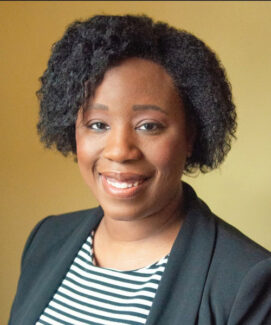
Lancaster was responsible for implementing COVID-19 procedures in the nursery.
Some of these included restricting face-to-face visits, increasing sanitation procedures, doing medical screening for house guests and developing remote work plans and procedures for staff she supervises.
“We never had an intention of turning away families during the pandemic. We understand that they and others are at a greater risk for community spread if they don’t have a safe place to go,” she said.
“We have two medical isolation rooms, and have existing procedures in place to prevent the spread of communicable illness. If we have a child come in who has tested positive for COVID-19, we will do everything we can to support the family and meet their needs, while also doing the utmost to keep everyone safe and healthy.”
Lancaster says Team Isabel, the Springfield community and donors have inspired her and kept her motivated to persevere through this uncertain time.
Lancaster’s advice for anyone faced with difficult decisions, in or out of the confines of COVID-19: “You’re going to make the wrong call sometimes. Own it. Accept it. Don’t beat yourself up about it. And just get back up and go back at it again.”
Team at museum pivots to offer child care for essential workers
A hands-on science museum may not be the first place you think to send your family in a pandemic.
That’s why Rob Blevins and his team are game-changers.
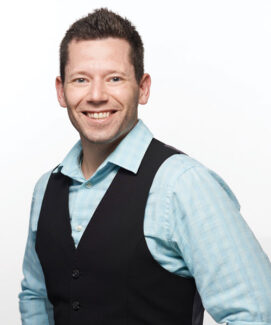
They took a facility that would likely be sitting empty during this crisis and turned it into a gift to the community.
In mid-March, Discovery Center staff announced they would shut down normal operations. Instead, they would offer child care for health care workers — for free.
“I had been talking to someone from the health department, and they said they were afraid there was nowhere for health care workers’ children to go. They were afraid we would see a decline in that workforce.”
Blevins and his staff agreed: They would help the helpers.
“We decommissioned the center in days,” he said.
It was already a great place for social distancing, with 60,000 square feet and classrooms.
His team configured it into even more spaces.
Hundreds of health care workers signed up for spots to send children to the center.
Classes, which included educational and physical activities, were limited to a small number of children. Staff members made sure everything was sanitized and different classes didn’t come into contact with each other.
By late June, when the Discovery Center reverted to its normal operations, staff members had provided 100,000+ hours of care for more than 750 children, as well as countless meals.
The program cost about $140,000 a month to run, and they needed donations to cover most of that.
Chartwells — which is also Missouri State’s food service — provided lunches at cost for the first few weeks.
Starting in April, other community partners donated breakfast, lunch and snacks.
The museum is open to the public again, taking plenty of safety precautions.
The team is continuing to offer child care as well. This fall, they started two education programs. This includes opening an independent school to help with Springfield Public Schools’ plan for in-person schooling.
Blevins said doing the same thing they had always done would not have worked during a pandemic.
“We were one of only two science centers in North America to remain open during COVID. Just sitting there idle wasn’t going to get us anywhere.”
He credits the “incredible people” on his staff for agreeing to help the community, then pulling off this feat.
“Don’t keep anyone on your team who wants to keep ‘watering the lawn in the rain.’ Make bold decisions. And go 100% in.”
New physician assistant felt called to help in New York
Makenzie Abbott understands the expression “baptized by fire.”
Abbott graduated from Missouri State’s physician assistant studies graduate program in December 2019. She passed her boards in January and received her license in February.
In March, she signed up to go work in New York City — then the nation’s coronavirus epicenter.
“I felt like I was being called to go and help. They needed medical personnel and I felt like it would be a good use of my education and time. I wasn’t sure what to expect, but I wasn’t scared.”
A native of Jefferson City, it was her first time in New York. She spent 37 days in a hospital in the Bronx, caring for intubated patients in the ICU. At one point, there was only a single ventilator left in stock.
With the exception of labor and delivery, the entire hospital had been converted to take care of COVID patients.
“It definitely was overwhelming. It was an unprecedented situation. People haven’t seen that level of illness in quite a while. There were treatments in place but no one knew what was helping. Protocols were changing daily, so it was a stressful situation.”
She’d steal away for a prayer or a moment of meditation.
Abbott was lucky; she only lost two patients. Some of her coworkers lost patients daily.
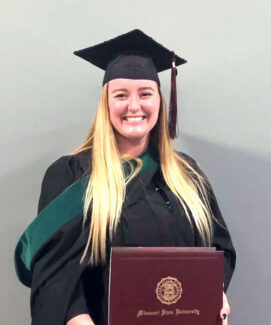
One of the most valuable tools she developed was learning how to communicate with families. Families could not come to the hospital to visit or say goodbye.
She called each family daily to update them on their patient’s condition.
When it became clear a patient was going to die, they would Facetime the family to say goodbye.
Her experience is peppered with unforgettable moments, but a joyous one was the first patient she was able to extubate. That patient was eventually released.
While her time in New York was challenging and at times grueling, it was rewarding.
“I felt a little bit of satisfaction knowing I was there helping, whether it was helping families, or the staff who had been dealing with this for months and were exhausted, or helping my patients get better.”

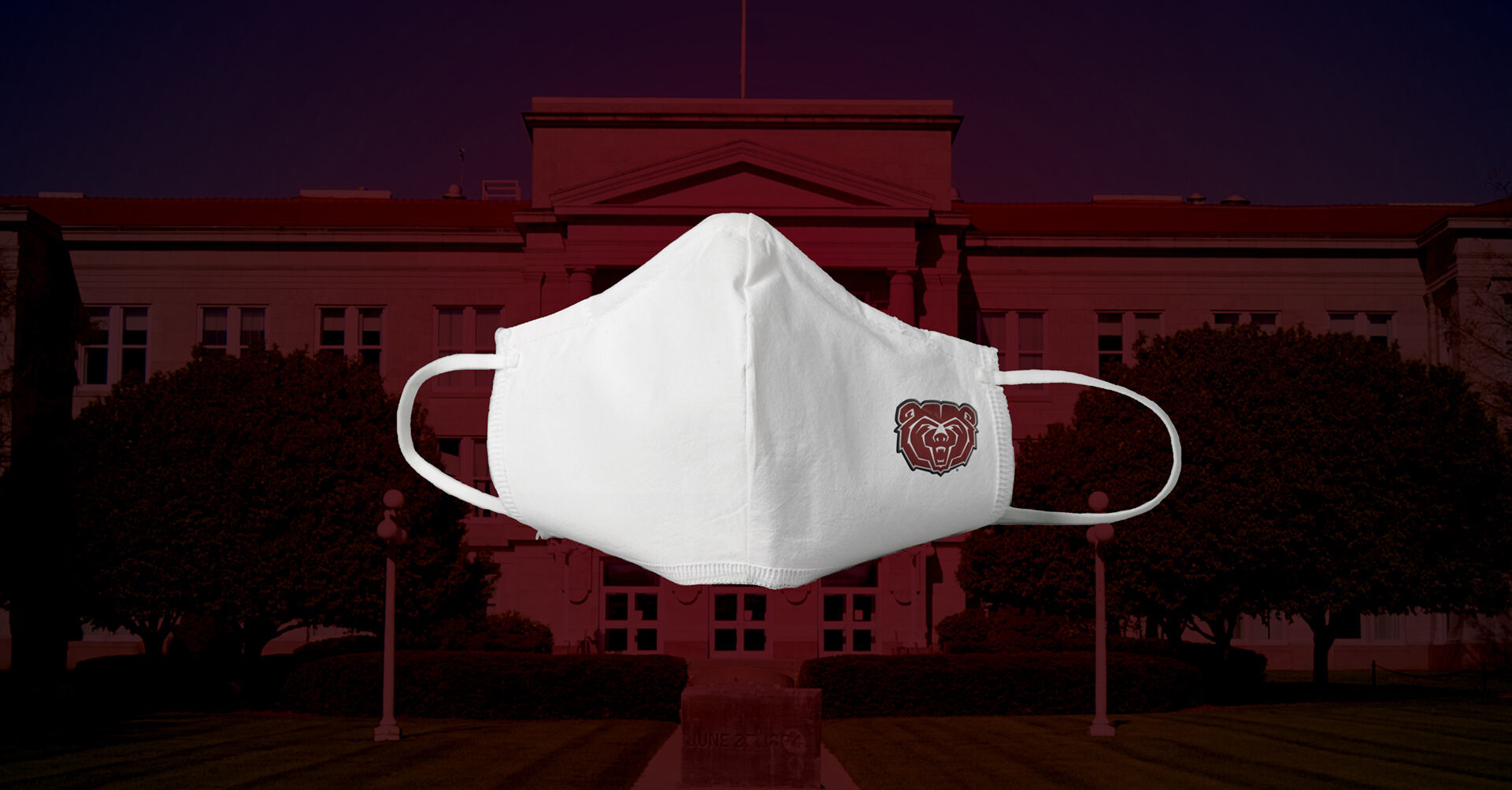
Leave a Reply